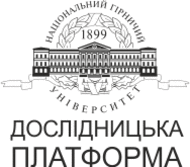№81-14
Method of remote change of the algorithm scheme in the controller for automation of control processes of technological objects
A. Bublikov1, O. Repych1, S. Zubenko1, D. Slavinskyi1, I. Kolysnychenko1
1Dnipro University of Technology, Dnipro, Ukraine
Coll.res.pap.nat.min.univ. 2025, 81:140–148
Full text (PDF)
https://doi.org/10.33271/crpnmu/81.140
ABSTRACT
Purpose. To increase the efficiency of the process of automation of remote programming of controllers by creating a method of transmitting algorithms for automatic control of technological objects and processes via the Internet or local network using a message that activates certain fragments of the program code.
The methods. Graph theory and Boolean algebra were used to set algorithms for automatic control of technological processes. In addition, production rules were used as one of the forms of knowledge representation to describe the control algorithm. Elements of the theory of matrix representation were used to transform the system of production rules into a set of matrices. Also, computer modeling methods were used to confirm the effectiveness of the proposed solution.
Findings. A method was created for converting automatic control algorithms, given in the form of a system of production rules, into a set of numerical matrices for remote change of the algorithm for automatic control of the technological process, which is implemented in the controller programmatically.
The originality. New regularities of matrix transformation of production rules as a form of knowledge representation about the algorithm of automatic control of technological processes for further transmission over the network in the form of a package to the controller are established. For this purpose, matrices of input values, output values, transition to logical values and execution of logical operations on them are separately created, taking into account the sequence of their execution, which is given by the conditions of the production rules. The filling of the matrices occurs according to specially created rules, which allow to reproduce at the controller program level production rules of any structure with variable input and output values of the control algorithm. The proposed regularities have been further developed provided that a method of remote programming of controllers is created.
Practical implementation. The proposed method is a necessary condition for creating complex multi-level automation systems, at the upper level of which the analysis of the collected information takes place and the formation of control influences as a result in the form of certain control tactics, which are given by the production rule systems. This method can also be used in the application of Internet of Things technology and in cyber-physical systems, when “smart” components of complex automation systems exchange not only collected data, but also fragments of the knowledge base with the aim of coordinating actions and performing joint work in an autonomous mode.
Keywords: automatic control algorithm, production rules, transition graph, remote change of the control algorithm in the controller.
References
1. Network King. (n.d.). Top 10 Programmable Logic Controller (PLC) Monitoring Tools. https://network-king.net/top-10-programmable-logic-controller-monitoring-tools/
2. Wikipedia contributors. (2024, May 10). CODESYS. Wikipedia. https://en.wikipedia.org/wiki/CODESYS
3. Bastani, O., Duggirala, P., & Natarajan, S. (2024). Agents4PLC: Automating Closed-loop PLC Programming with Large Language Models [Preprint]. arXiv. https://arxiv.org/abs/2410.14209
4. Boyko, O., Voskoboinyk, E., Protsenko, S., & Slavinskyi, D. (2021). Design and development of software industrial controllers based on status. Collection of Research Papers of the National Mining University, 64, 229–238. https://doi.org/10.33271/crpnmu/64.229
5. Bublikov,A.,& Boyko,O. (2022).Methodology of teaching software development for the systems of automatic discrete control of technological processes. Collection of theses of scientific and methodical reports of scientific and pedagogical internship : “Vasile Goldis” Western University of Arad (Romani), North University Centre of Baia Mare (Romani), Institute of professional development (Slovakia), 109–115.




